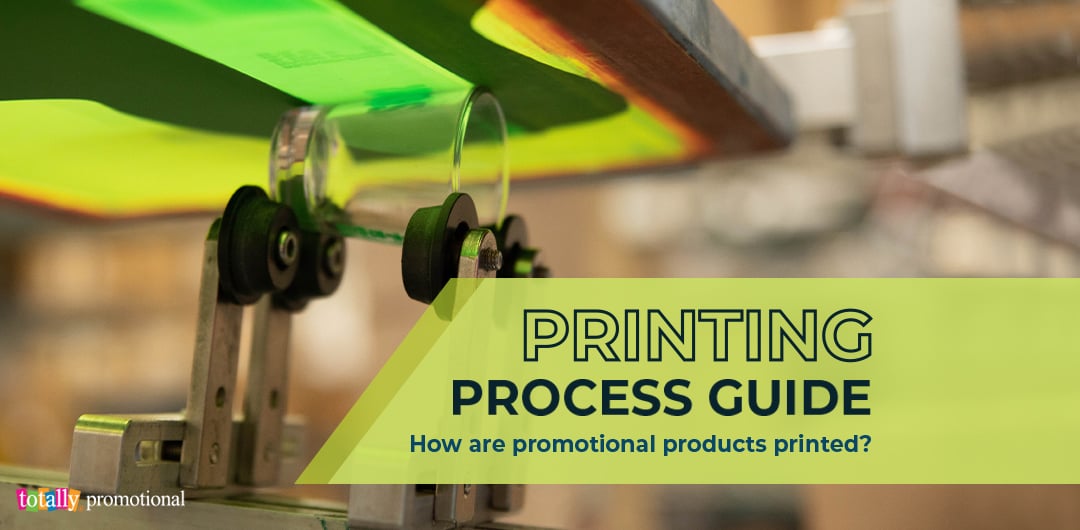Most people don’t think twice about the printing processes used for their promotional products. The methods can be difficult to understand unless you have a printing process guide!
Totally Promotional’s No. 1 goal is to make sure our customers are happy with the logos or unique designs on their custom pens, promotional cups, logo T-shirts and other products. Our print experts know which process is best for each product.
So, if you’ve ever wanted to learn about printing processes, you’ve come to the right place. It’s what we do!
Printing clearly and professionally on all types of surfaces doesn’t happen by accident. It takes high-tech equipment, skilled operators and decades of experience. (We have all that, by the way.)
Printing processes have expanded over the years to keep up with the growing selection of promotional products. Totally Promotional uses several different methods in-house to print logos, sayings and unique artwork on the products you use every day.
The ultimate Printing Process Guide
The skilled printers at Totally Promotional are trained to make each personalized design and saying look amazing on your products. Here are the processes we use for printing on products:
What is screen printing?
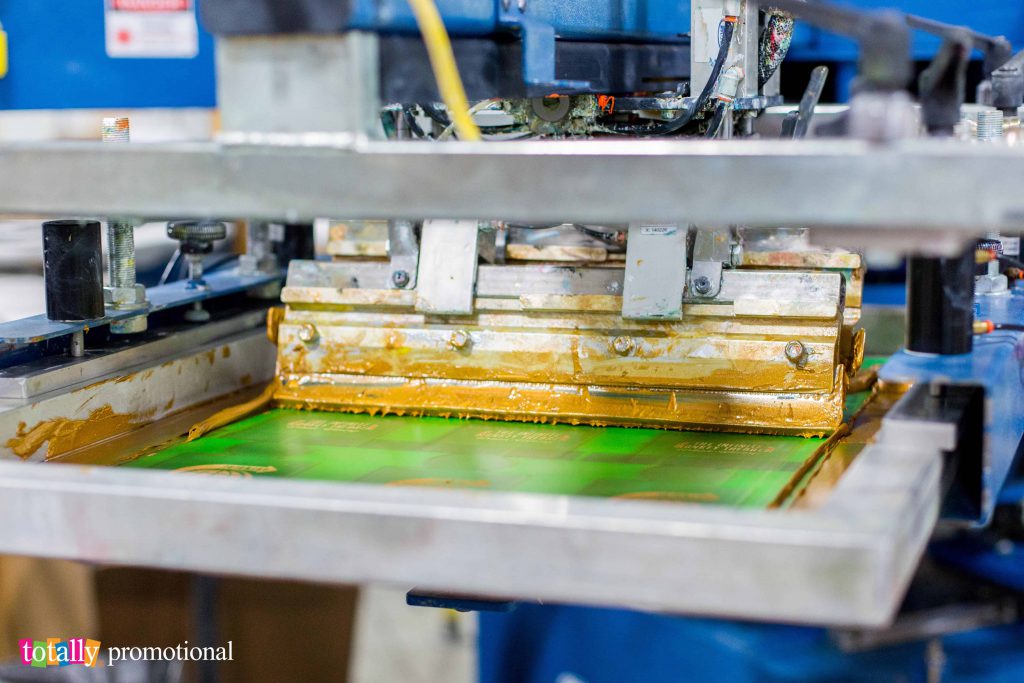
The screen print or silk-screen printing process starts with the creation of a custom screen or stencil to produce a logo or other design. The number of screens created varies, depending on the number of colors needed for the job. A special ink that adheres to the product is pushed through the openings in the screen and onto the surface of the item. The product is then placed in a dryer for curing before being prepped for delivery.
Screen-printing history: The art of screen printing began in China during the Song Dynasty from 960-1279. The simple goal at that time was to transfer designs onto fabrics. The Japanese are credited with taking screen printing to the next level by using paper stencils to create images. Ink was then forced onto the stencils through mesh made from human hair. France in the 18th century began using silk screens to print on fabric. The process was commercialized in the early 1900s with the introduction of photo-imaged stencils.
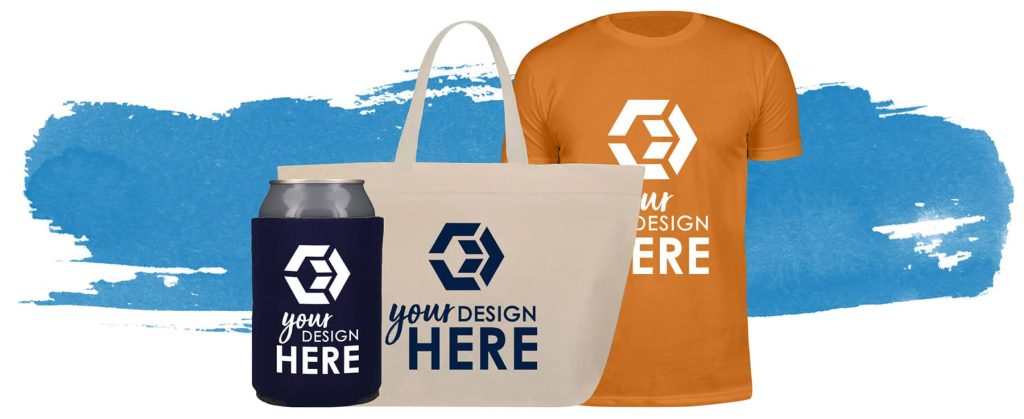
Popular screen-printed products: Can coolers, bags, drinkware/water bottles, apparel
What is pad printing?
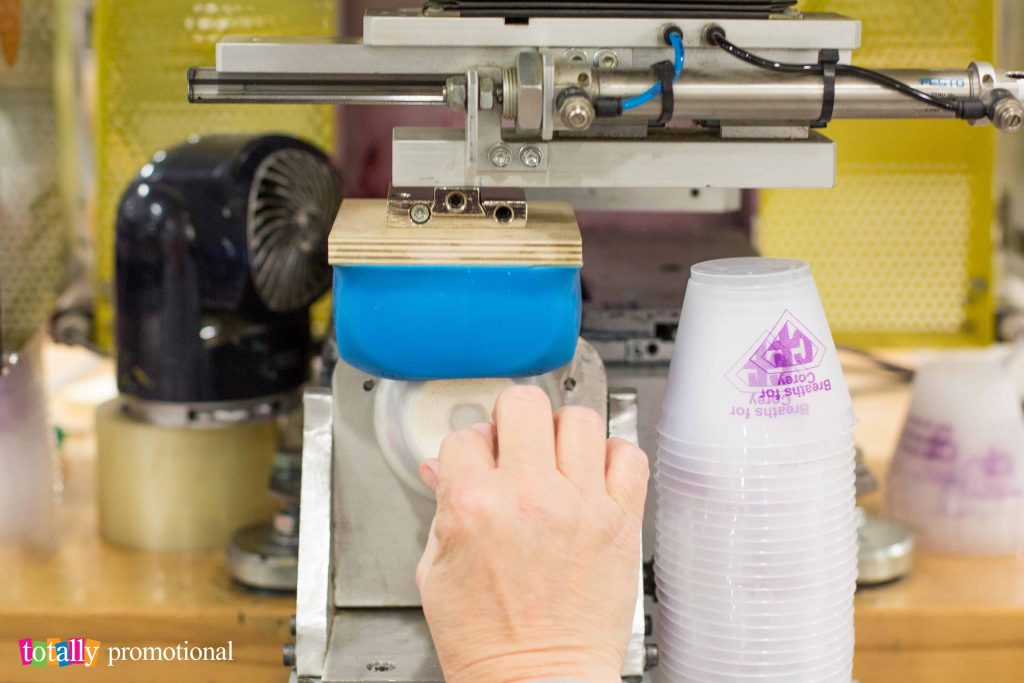
Pad printing involves the creation of a custom cliche or plate for each order. Artwork is etched into the surface of the plate where the ink is deposited. When the plate is inked, a silicone pad or “stamp” picks up the ink and transfers the image to the finished product. Pad printing, also called tampography, works well on numerous surfaces, shapes, sizes and textures.
Pad-printing history: The origins of pad printing began in the early 1800s with a hand-transfer printing method. A bag of soft gelatin material was used to transfer images from plates to the surface of products. The initial transfer printing plates were made of copper and engraved by hand. Years later, industrial applications in Switzerland photochemically etched images onto steel to imprint watch faces. The gelatin material was replaced with silicone transfer pads after World War II.
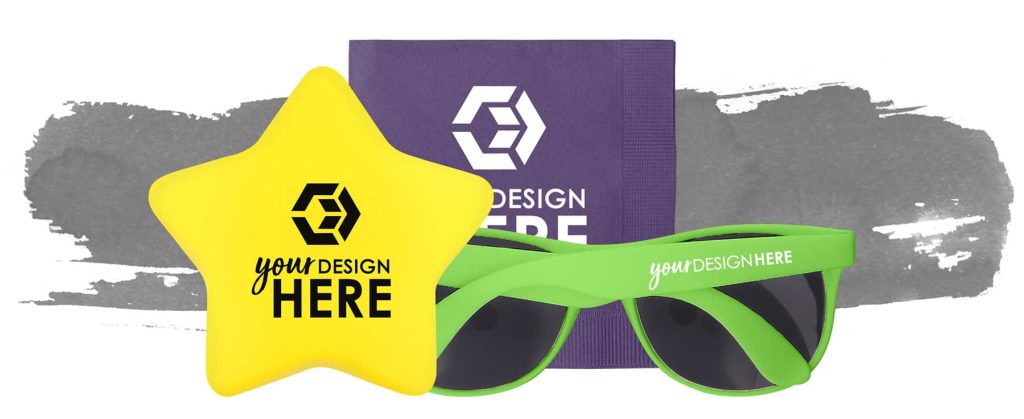
Popular pad-printed products: Napkins, stress balls, plastic sunglasses, all tech items except adhesive phone wallets
What is digital printing?
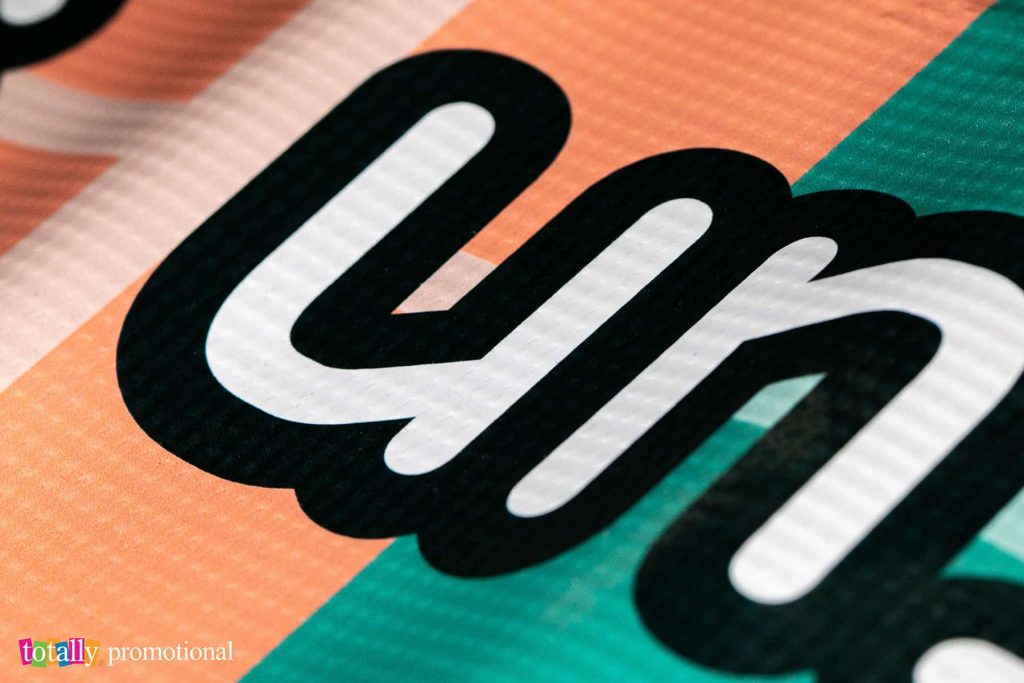
(UV Large Format)
The ultraviolet (UV) digital-printing process uses a large-format, flatbed digital printer to apply artwork with UV curable ink. The printhead passes over the printing surface where many items are placed waiting to be printed. The ink is cured simultaneously by a UV lamp that follows each printhead motion. UV digital-printing methods are best when imprinting full-color, detailed images on flat or nearly flat surfaces.
(Eco-Solvent Format)
The eco-solvent digital-printing process uses a large-format printer to place a solvent-based ink directly onto the finished media. An eco-solvent printer allows operators to print on a large variety of materials at once. It also allows the replication of photos for banners, banner stands and other promotional items where a direct-to-surface print is needed for best results.
Digital-printing history: Digital printing began in the early 1990s. The process creates images with a calculated set of numbers and mathematical formulas. The digitized images are replicated in pixels and dictate the deposit of ink, toner or exposure to electromagnetic energy needed to create the data. Digital printing uses a precise color management system to keep images looking their best on multiple surfaces.
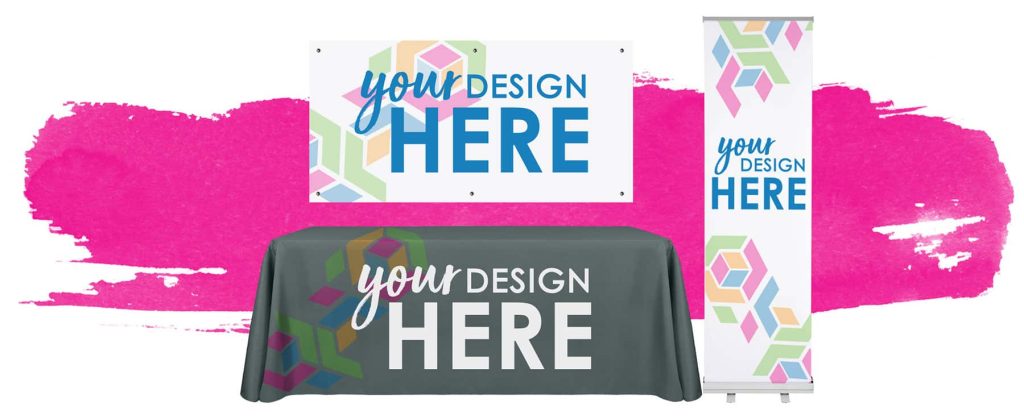
Popular digitally printed products: Customizable tablecloths, banners/banner stands, full-color lanyards, full-color can coolers and other full-color items
What is sublimation printing?
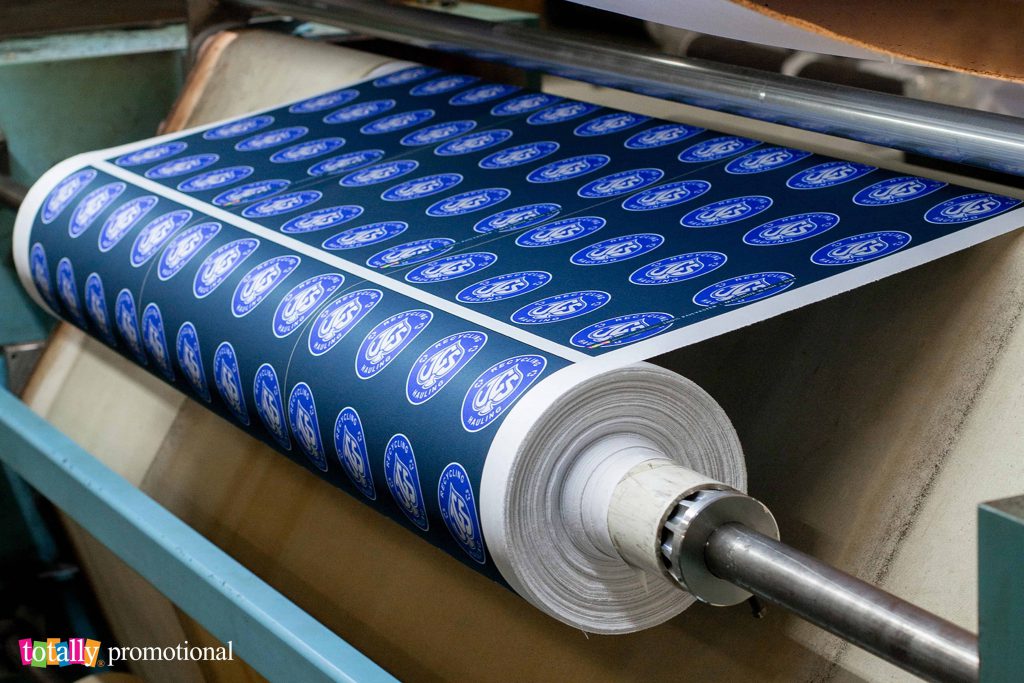
Dye sublimation begins by digitally printing artwork onto a coated paper substrate with water-soluble ink. The paper is then placed onto the product’s surface where it is permanently sublimated or dyed onto the item using a combination of heat and pressure. By manipulating the concentration of ink and the amount of heat and pressure, dye sublimation results in a top choice for detailed designs, full-color artwork and photographs.
Sublimation printing history: Dye sublimation took off in the 1950s when French researcher Noel De Plasse discovered that dye can sublimate and possess printing capabilities. However, its actual origins date back to the late 18th century during research on piezoelectricity and the study of inkjet physics. Like most print processes, dye sublimation initially was used on paper and paper products. Eventually, it became the printing option of choice for textiles when using heat.
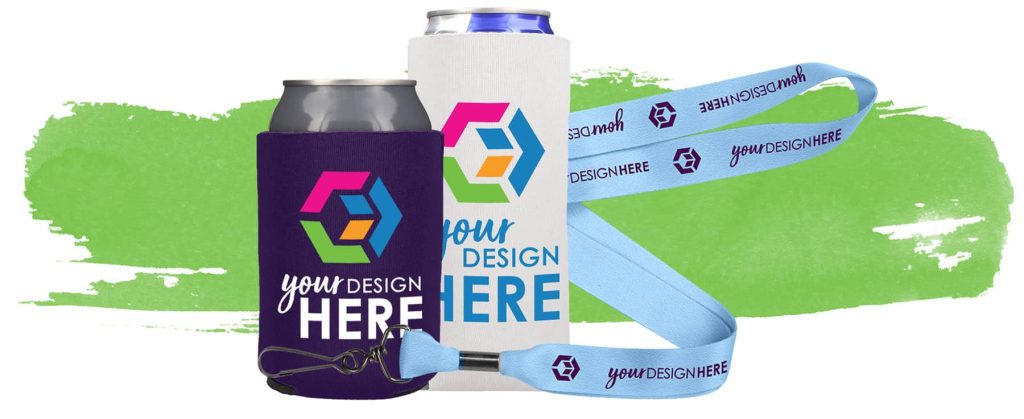
Popular dye-sublimated products: Full-color can coolers, personalizable table covers, lanyards, neck gaiters, dye-sub full-color bags
What is foil stamping?
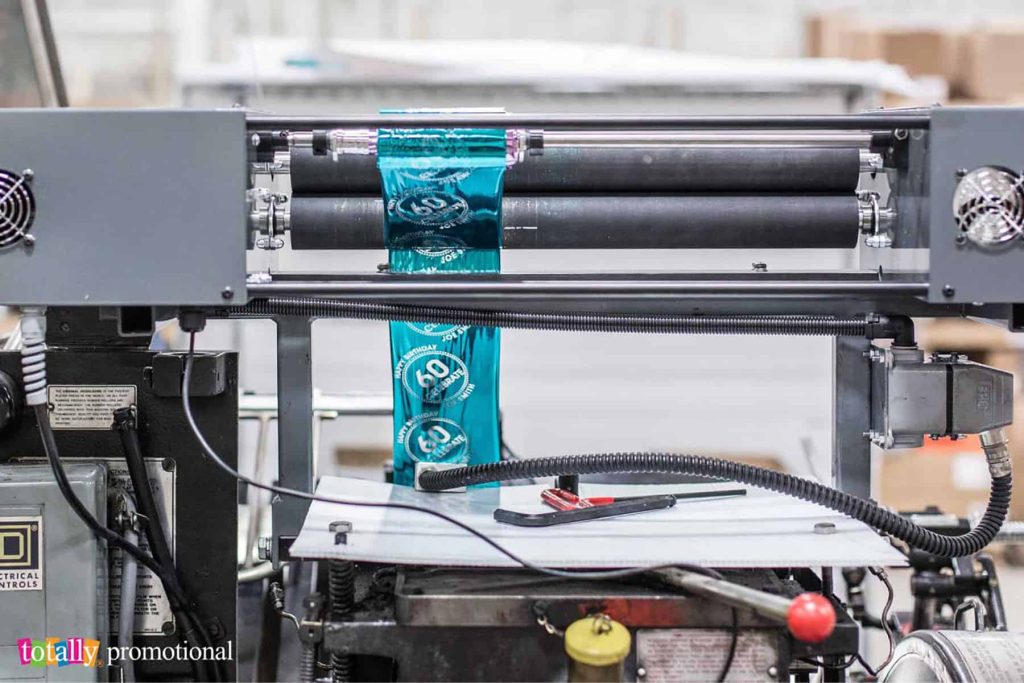
The unique foil-stamping process is the application of metallic or pigmented foil onto material by using a heated die. The heated die is compressed with the metallic foil and the product to ensure proper transfer of the foil onto the surface of the item. Foil stamping adds an elegant look to wedding products such as napkins and other promotional items.
Foil-stamping history: The time-honored, foil-stamping process began when early Egyptians pounded gold very fine to decorate coffins, mummies and other items of value. During the Middle Ages, monks used various mechanical tools to decorate their books with gold for categorizing. Leather-bound books were one of the first items to be foil-stamped. Artists made a design in the leather before applying the fine gold dust by hand. Centuries later, the foil-stamp technique was simplified by affixing the pounded gold to paper. Heat was then used to remove the gold from the paper and transfer it to the stamped imprint. Today, gold has been replaced by numerous metallic foils to add an old-world touch to products.
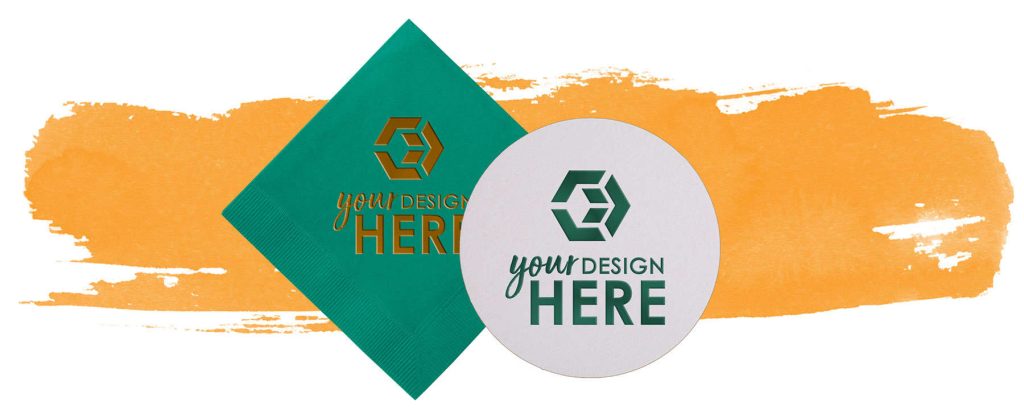
Popular foil-stamped products: Napkins, coasters
What is flexography printing?
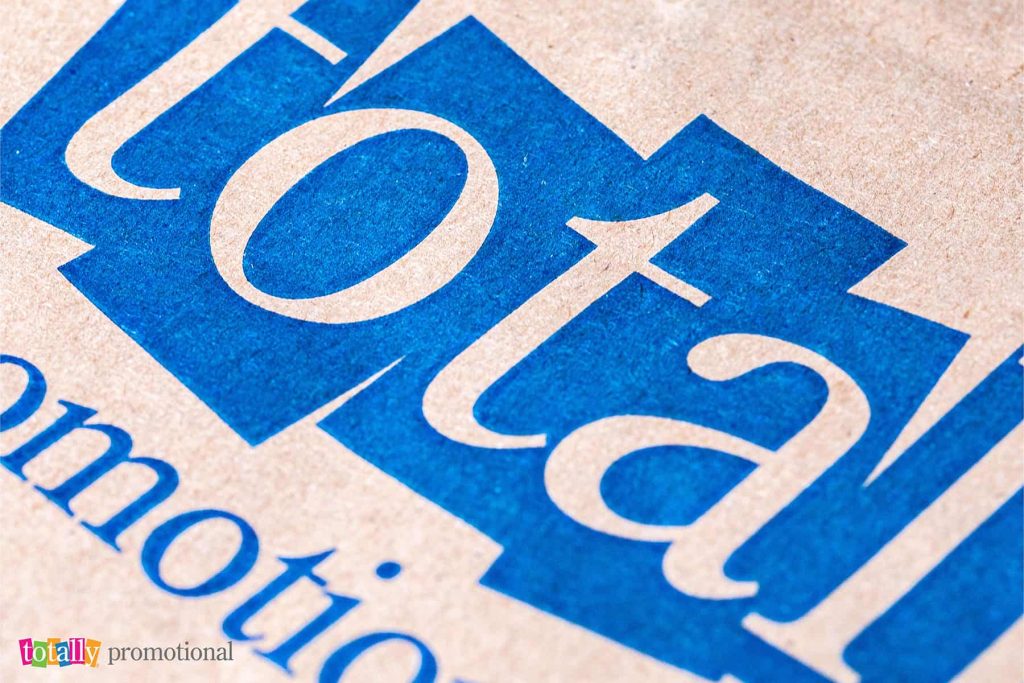
Often called “flexo,” the flexographic printing process uses a flexible plate on a fast-rotating drum to transfer ink onto a product. The process involves a solvent-based ink that immediately cures onto the surface to enable fast production speed. Flexography is often used on paper, plastic and corrugated items.
Flexography history: Flexography got its start in England in 1890 with a patent by Bibby, Baron and Sons. Standard metal plates were used before flexible printing plates became the norm. By the early 1900s, the process was updated with rubber printing plates and analine, oil-based ink to prevent the ink from smearing. Today, flexible photopolymer plates are laser-etched with images for printing.
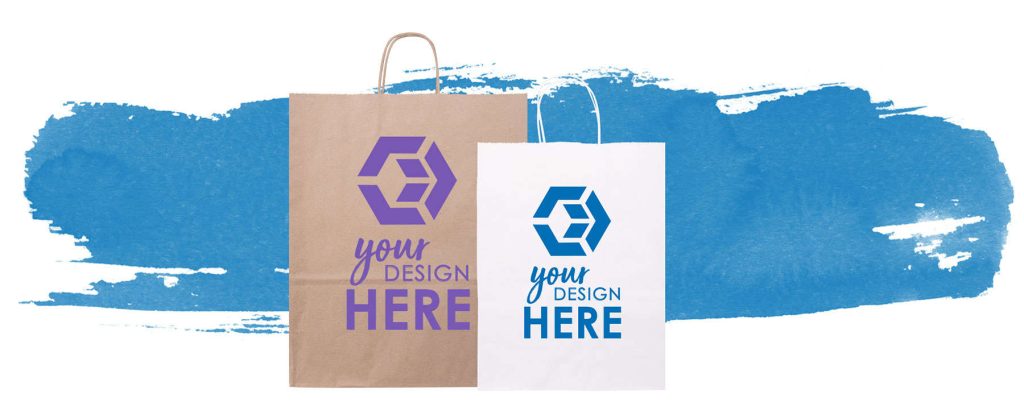
Popular flexographic-printed products: Paper bags
What is heat-transfer printing?
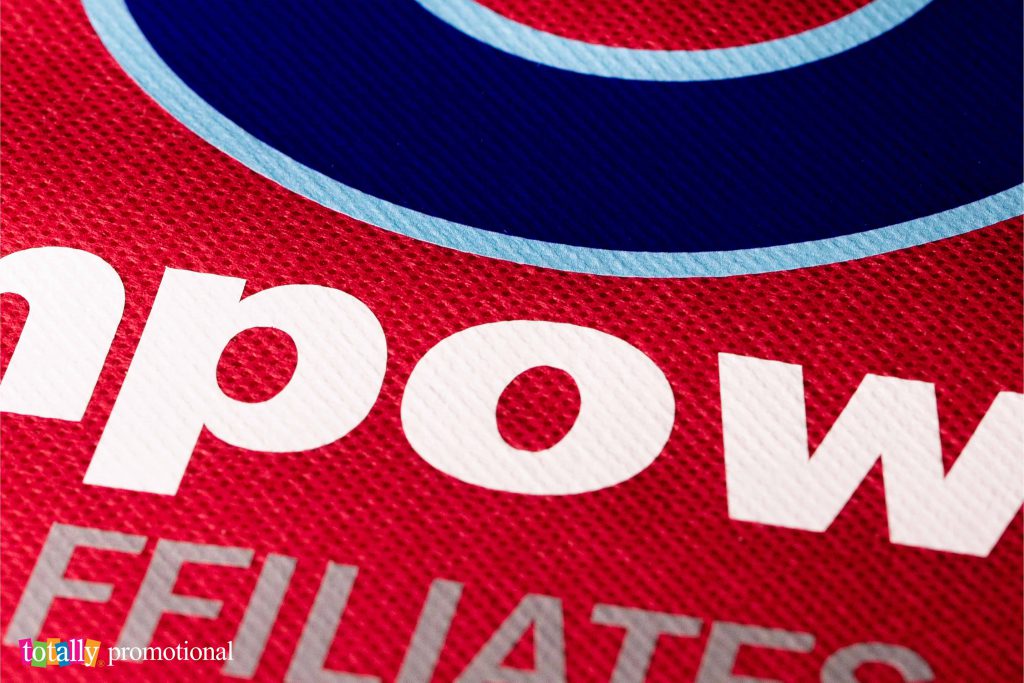
The heat-transfer printing process uses a heat press and wax-based inks to thermally transfer an image onto material. This process, combining heat and pressure, performs best on polypropylene, polyesters and other materials. Its most positive qualities include its adhesive ability and the heat- and water-resistant designs it creates. The colors it produces are typically high resolution, bright and bold.
Heat-transfer printing history: Heat-transfer printing as we know it today began in the 60s and was most often used for materials such as soft vinyl. Less than a decade later it was commonly used commercially in the plastic molding industry. Today’s digitally produced heat transfer process is less messy and much faster and cost-effective.
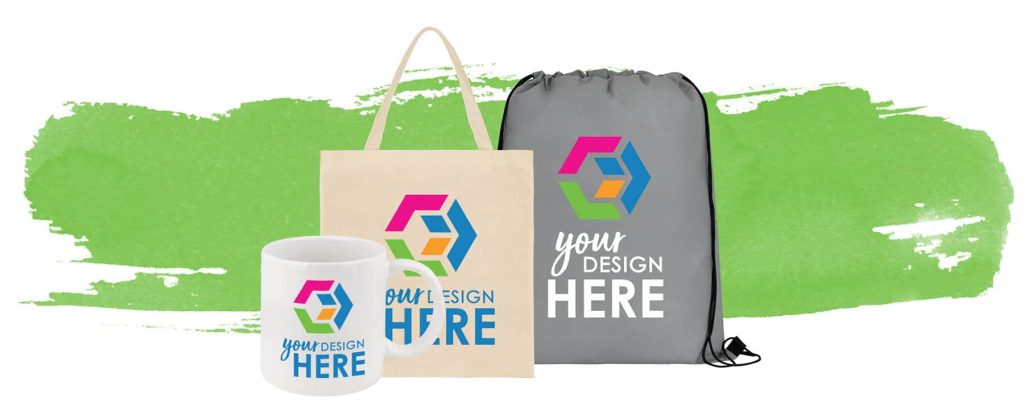
Popular heat-transfer printed products: Full-color bags and full-color mugs
Printing for you is what we do!
We find all types of logo imprinting fascinating as you can see in our Printing Process Guide! Each technique brings our promotional items to life for every event in your life. Trust us to make your company logo, cute wedding sayings or inspiring messages the best they can be.
As always, it’s Our Products. Your Story™.
Sources:
A Brief History of Screenprinting – WNY Book Arts Center
Pad Printing, Screen, Digital Printing Equipment, Printing Supplies & Inks , Surface Treating, Consumables & Services from DECO TECH (decotechgroup.com)



